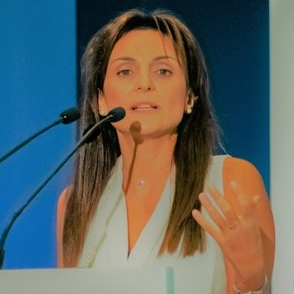Sustainable Management of Marine Resources under Uncertainty: Economic, Environmental and Social Aspects
A special issue of Sustainability (ISSN 2071-1050). This special issue belongs to the section "Resources and Sustainable Utilization".
Deadline for manuscript submissions: closed (15 December 2015) | Viewed by 104287
Special Issue Editor
Interests: resource and energy economics and econometrics; sustainable development and innovation; interdisciplinary approaches for sustainable development; climate change modeling and policy
Special Issues, Collections and Topics in MDPI journals
Special Issue Information
Dear Colleagues,
Estimates of global oceanic economic activity’s value range between 3-6 trillion (USD)/year. Such activity includes a wide range of ocean-related industries, which contribute to both current and future economic development. In fact, offshore activities are expected to be intensified in the near future. In this context, the single most important challenge will be the development of an integrated framework of analysis for assessing the environmental, economic (including financial), and social sustainability aspects of offshore activities. Developing such a framework will have to occur under environmental and socio-economic uncertainty. A related challenge is the development and implementation of the management strategies that are needed to support welfare-improving, sustainable offshore activities and to facilitate the implementation of the European Marine Strategy Framework Directive. Offshore activities involve three compounding levels of uncertainty—uncertainty over the underlying marine physical or ecological processes, uncertainty over the socio-economic impacts of offshore activities and of environmental changes (that are related to said activities), and uncertainty over technological changes that might ameliorate economic impacts and/or reduce the cost of limiting the environmental damage in the first instance. This Special Issue aims at building the needed integrated framework of analysis. Given the aforementioned three compounding levels of uncertainty, this is a challenge!
Dr. Phoebe Koundouri
Guest Editor
Manuscript Submission Information
Manuscripts should be submitted online at www.mdpi.com by registering and logging in to this website. Once you are registered, click here to go to the submission form. Manuscripts can be submitted until the deadline. All submissions that pass pre-check are peer-reviewed. Accepted papers will be published continuously in the journal (as soon as accepted) and will be listed together on the special issue website. Research articles, review articles as well as short communications are invited. For planned papers, a title and short abstract (about 100 words) can be sent to the Editorial Office for announcement on this website.
Submitted manuscripts should not have been published previously, nor be under consideration for publication elsewhere (except conference proceedings papers). All manuscripts are thoroughly refereed through a single-blind peer-review process. A guide for authors and other relevant information for submission of manuscripts is available on the Instructions for Authors page. Sustainability is an international peer-reviewed open access semimonthly journal published by MDPI.
Please visit the Instructions for Authors page before submitting a manuscript. The Article Processing Charge (APC) for publication in this open access journal is 2400 CHF (Swiss Francs). Submitted papers should be well formatted and use good English. Authors may use MDPI's English editing service prior to publication or during author revisions.





